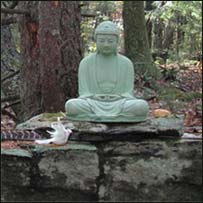|
|
 |
Please support Dharma Seed with a 2025 year-end gift.
Your donations allow us to offer these teachings online to all.

|

|

|
The greatest gift is the
gift of the teachings
|
|

|
| |
|
Dharma Talks
|
2018-09-19
Mindful of Race: Transforming Racism From The Inside Out
52:42
|
|
Ruth King
|
|
|
The world’s heart is on fire, and race is at its core. The bitter racial seeds from past beliefs and actions are blooming all around us, reflecting not only a division of the races that is rooted in ignorance and hate, but also, and more sorely, a division of the heart. Racism is a heart disease. How we think and respond is at the core of racial suffering and racial healing. If we cannot think clearly and respond wisely, we will continue to damage the world’s heart.
In this talk, my hope is to ignite your imagination and help you discover your voice in the song of racial healing, and how we could live in this world if every one of us aimed our energy toward awakening, non-harming, generosity, and kinship—a world with race but without racism. It all begins with an examination of our habits of harm.
|
|
Insight Meditation Community of Washington DC
:
IMCW Wednesday Evening Talks
|
|
|
2018-09-19
Guided Meditation AM Day 2: Head, Hair, Body Hair, Nails, Teeth, Skin (Retreat at Spirit Rock)
53:08
|
|
Bob Stahl
|
|
|
Guided meditation on head, hair, body hair, nails, teeth, & skin
|
|
Spirit Rock Meditation Center
:
Finding Freedom in the Body
|
|
|
2018-09-18
Erfolg und Misserfolg
57:24
|
|
Renate Seifarth
|
|
|
Es geht um die verschiedenen Objekte in der Vipassanameditation und die Haltung, mit der wir ihnen begegnen wollen. Unterstrichen wird die unparteiliche Haltung und der hohe Erfolgsdruck, den wir oft zur Praxis bringen und er unser unvoreingenommenes Begegnen mit uns und unseren Erfahrungen behindert.
|
|
Buddha-Haus
:
7 Tage Vipassana und Mettaretreat
|
|
|
|
|